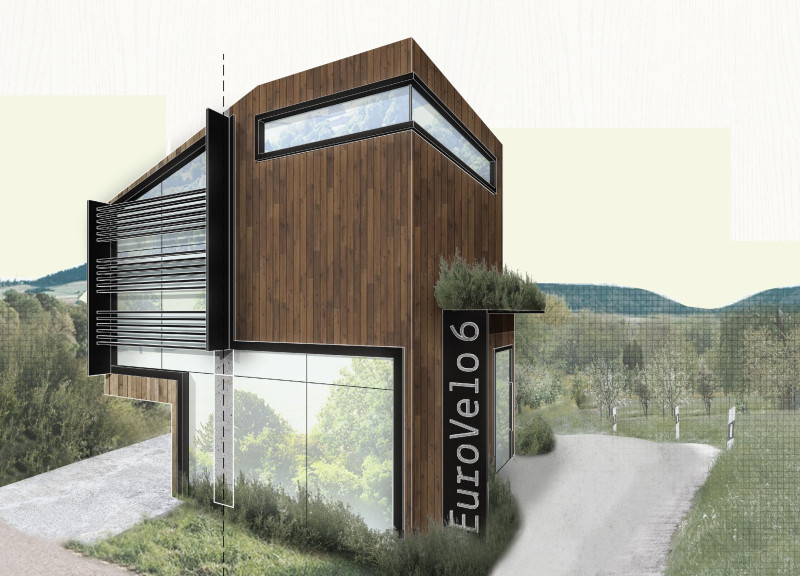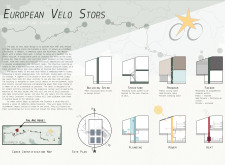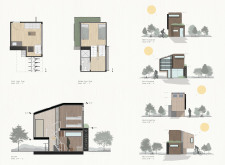5 key facts about this project
The project incorporates a series of cabin designs catering to different needs: Basic, Standard, and Deluxe. Each model varies in size and facilities, allowing it to serve both short-term and long-term stops. Materials such as wood, stone, and glass are utilized to enhance durability while ensuring aesthetic appeal. The integration of solar panels establishes a commitment to renewable energy, and natural ventilation strategies help reduce reliance on mechanical systems.
Unique Design Approaches
The architectural design takes an adaptive approach by utilizing local materials, which not only supports regional economies but also minimizes the environmental impact of transport. The emphasis on simplicity in form, marked by clean lines and a functional layout, allows the structures to remain unobtrusive while providing essential amenities. The significant use of glass fosters a connection to the outdoors, ensuring that users can enjoy views of the natural landscape.
Each cabin is equipped with essential features such as bike storage, communal spaces, and private sleeping areas, catering to a variety of user needs. Furthermore, the roof treatments incorporate vegetation, contributing to biodiversity and providing natural insulation. This unique interplay of architectural and ecological practices distinguishes the EuroVelo Stops from typical cycling shelters.
Functional Elements
The layout of each cabin is designed to optimize usability while fostering community interaction. The public living spaces are designed for social engagement, allowing travelers to share experiences. High levels of natural light create a welcoming atmosphere within the interiors, alongside strategic signage and navigational aids that enhance the overall user experience. Plumbing for showers and waste management ensures that the facilities are equipped for longer stays, accommodating the diverse needs of cyclists.
Explore the project presentation for detailed architectural plans, sections, and designs that provide further insights into the EuroVelo Stops project. Understanding these elements will reveal a comprehensive approach to architecture that integrates community needs, sustainability, and user experience seamlessly.


























